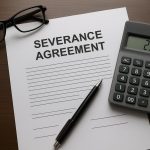Water damage is a common and often underestimated problem that can have serious consequences if left unchecked. While some instances of water damage are immediately apparent, others may go unnoticed for extended periods, leading to long-term structural issues and health hazards. In this article, we’ll explore the signs of long-term water damage and discuss the importance of restoration services in addressing and mitigating the effects of water damage.
Understanding Long-Term Water Damage
Long-term water damage refers to the gradual and ongoing effects of water intrusion or moisture buildup within a structure. Unlike sudden water damage events, such as burst pipes or flooding, long-term water damage may develop slowly over time, often going unnoticed until significant damage has occurred. Common causes of long-term water damage include:
- Leaking Plumbing: Deteriorating or damaged plumbing fixtures, such as pipes, faucets, or water heaters, can develop leaks over time, leading to water damage in walls, ceilings, and floors.
- Roof Leaks: Roof leaks caused by damaged shingles, flashing, or seals can allow water to seep into the attic or interior spaces, resulting in water damage and mold growth.
- Poor Drainage: Improperly installed or clogged gutters, downspouts, and drainage systems can lead to water pooling around the foundation of a building, causing moisture infiltration and structural damage.
- Condensation: Excessive moisture buildup due to poor ventilation or high humidity levels can lead to condensation on windows, walls, and ceilings, contributing to water damage and mold growth.
Signs of Long-Term Water Damage
Identifying signs of long-term water damage early is crucial for preventing further deterioration and minimizing the need for costly repairs. Some common signs of long-term water damage include:
- Visible Stains and Discoloration: Water stains or discoloration on walls, ceilings, or floors may indicate long-term water infiltration or leakage. These stains may appear yellow, brown, or gray and often worsen over time if left untreated.
- Peeling or Bubbling Paint and Wallpaper: Moisture trapped behind paint or wallpaper can cause it to peel, bubble, or blister, indicating the presence of water damage beneath the surface.
- Musty Odors: Persistent musty or moldy odors in a building may indicate hidden moisture problems or mold growth resulting from long-term water damage.
- Warped or Buckled Flooring: Water damage can cause hardwood floors to warp, buckle, or cup, while laminate or vinyl flooring may become swollen or discolored due to moisture absorption.
- Sagging or Cracked Drywall: Prolonged exposure to moisture can cause drywall to become soft, saggy, or cracked, indicating underlying water damage.
- Mold and Mildew Growth: Visible mold or mildew growth on surfaces such as walls, ceilings, or grout lines may indicate long-term moisture issues and the presence of water damage.
The Importance of Restoration Services
When faced with signs of long-term water damage, seeking prompt restoration services is essential for mitigating the damage, restoring the affected areas, and preventing further deterioration. Restoration services offered by trained professionals include:
- Water Extraction and Drying: Restoration technicians use specialized equipment such as dehumidifiers, air movers, and moisture meters to extract standing water and thoroughly dry affected surfaces, preventing mold growth and structural damage.
- Mold Remediation: In cases where mold growth is present, restoration services include mold remediation to safely remove mold colonies, sanitize affected areas, and prevent future mold growth.
- Structural Repairs: Restoration technicians assess the extent of structural damage caused by water intrusion and perform necessary repairs to restore the integrity of the building.
- Content Restoration: Restoration services may include cleaning and restoring salvageable belongings and personal possessions affected by water damage.
- Preventive Measures: Restoration professionals may recommend preventive measures such as improved drainage, waterproofing, or ventilation systems to reduce the risk of future water damage.
Choosing a Restoration Company
When selecting a restoration company to address long-term water damage, consider the following factors:
- Certifications and Training: Choose a restoration company with certified technicians trained in water damage restoration and mold remediation techniques.
- Experience and Reputation: Look for a restoration company with extensive experience and a reputation for providing quality service and customer satisfaction.
- Emergency Response: Select a restoration company that offers 24/7 emergency response services to address water damage promptly and minimize further damage.
- Insurance and Licensing: Ensure that the restoration company is properly licensed, bonded, and insured to perform restoration services in your area.
Conclusion
Long-term water damage can have significant implications for the structural integrity and safety of a building, as well as the health and well-being of its occupants. By understanding the signs of long-term water damage and the importance of restoration services, property owners can take proactive measures to address water damage promptly and effectively. Prompt action, coupled with professional restoration services, can help mitigate the effects of water damage, restore the affected areas, and prevent future problems, ensuring a safe and healthy environment for all.
Lynn Martelli is an editor at Readability. She received her MFA in Creative Writing from Antioch University and has worked as an editor for over 10 years. Lynn has edited a wide variety of books, including fiction, non-fiction, memoirs, and more. In her free time, Lynn enjoys reading, writing, and spending time with her family and friends.















